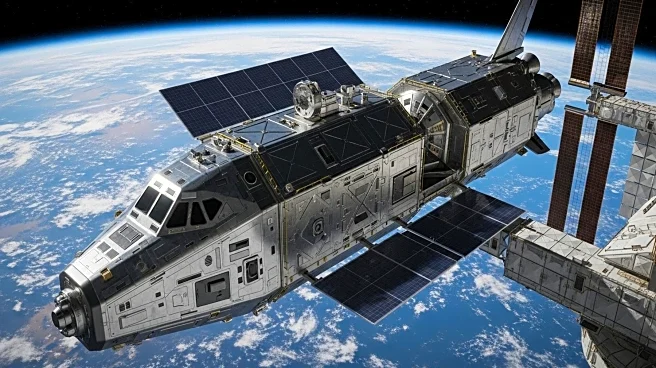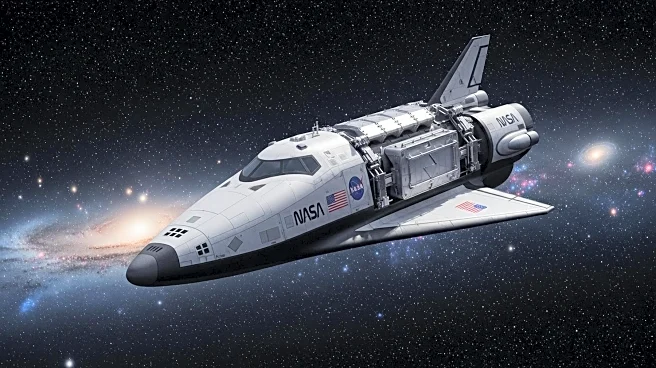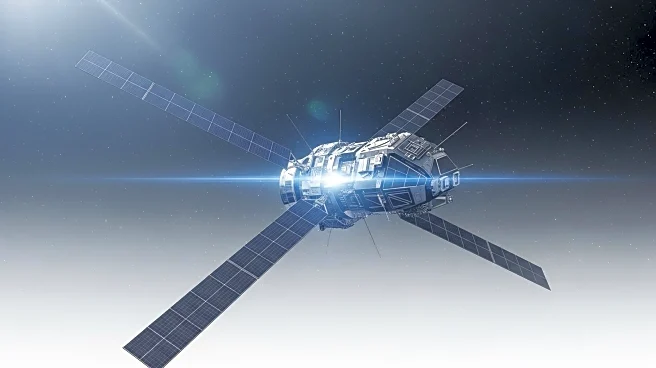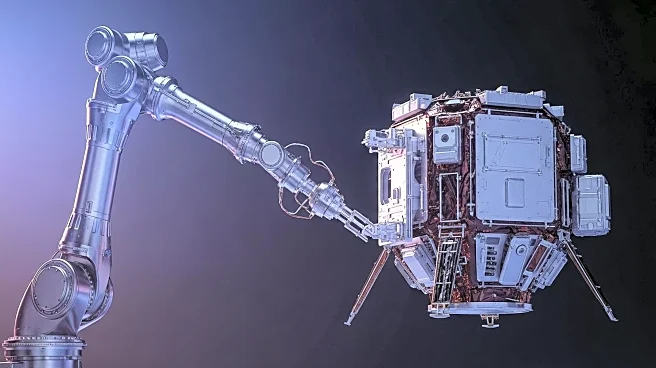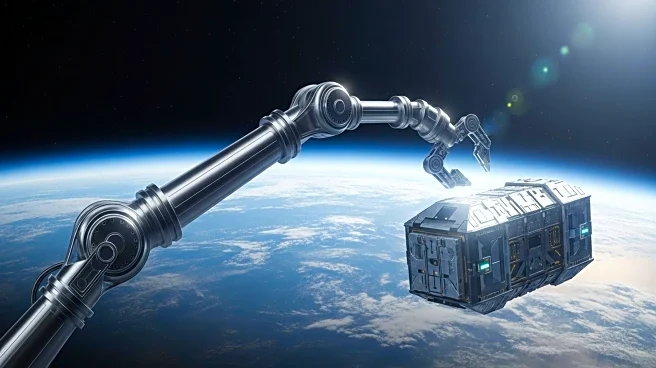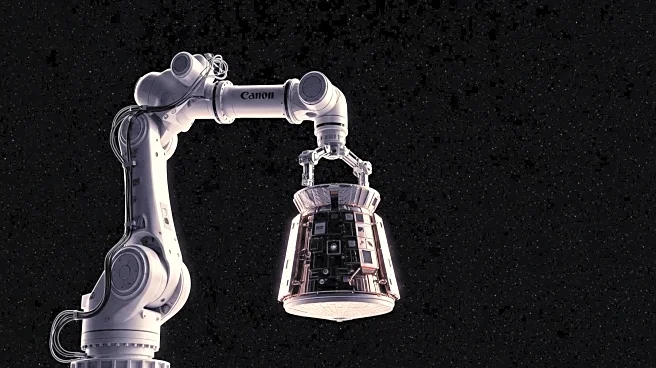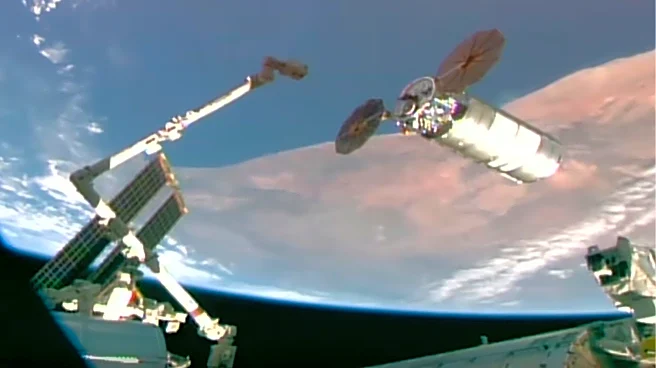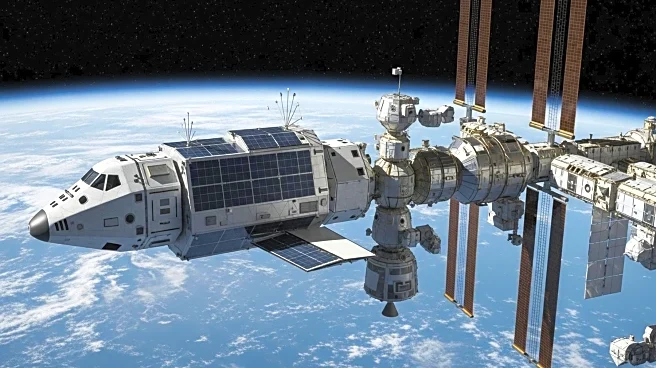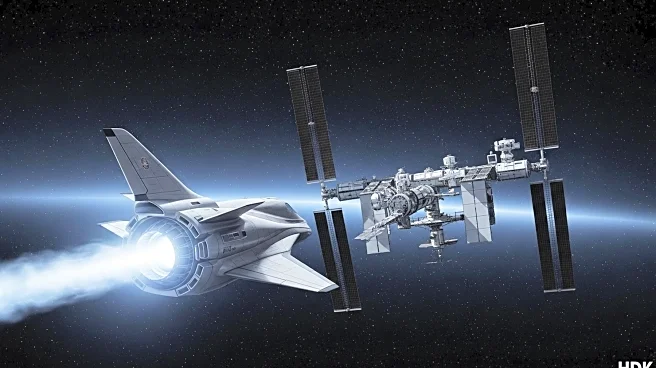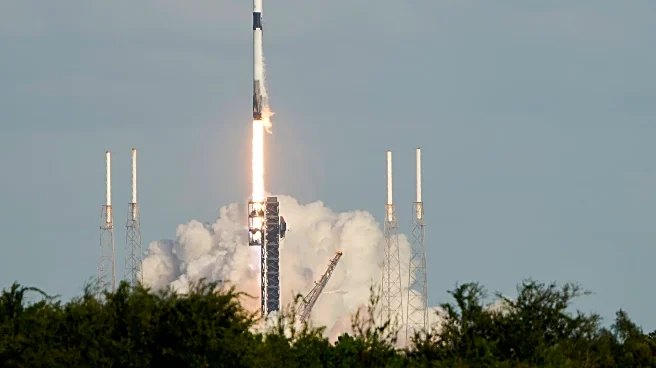What is the story about?
What's Happening?
Northrop Grumman's new Cygnus XL spacecraft has been successfully installed on the International Space Station (ISS) as part of NASA's Northrop Grumman Commercial Resupply Services 23 mission. The Cygnus XL, a larger and more cargo-capable version of the company's solar-powered spacecraft, was launched on September 14, 2025, from Cape Canaveral Space Force Station in Florida. The spacecraft carried over 11,000 pounds of research and supplies to the ISS. This mission marks the first flight of the Cygnus XL, which will remain docked at the space station until spring. Upon departure, it will dispose of several thousand pounds of debris by re-entering Earth's atmosphere, where it will burn up harmlessly.
Why It's Important?
The successful installation of the Cygnus XL spacecraft on the ISS is a significant milestone for NASA and Northrop Grumman, highlighting advancements in space logistics and resupply capabilities. This mission supports ongoing scientific research and operations aboard the ISS, which is crucial for understanding long-term human spaceflight and conducting experiments that benefit life on Earth. The increased cargo capacity of the Cygnus XL allows for more extensive research opportunities and supplies, enhancing the ISS's role as a hub for international collaboration in space exploration. The mission also demonstrates the effectiveness of public-private partnerships in advancing space technology and exploration.
What's Next?
The Cygnus XL will remain attached to the ISS until spring, providing essential supplies and supporting various research projects. After its mission is complete, the spacecraft will detach and re-enter Earth's atmosphere, safely disposing of waste materials. Future missions may continue to utilize the Cygnus XL's enhanced capabilities, potentially leading to more frequent and efficient resupply missions. This could further bolster the ISS's capacity to support scientific research and international cooperation in space.
AI Generated Content
Do you find this article useful?
